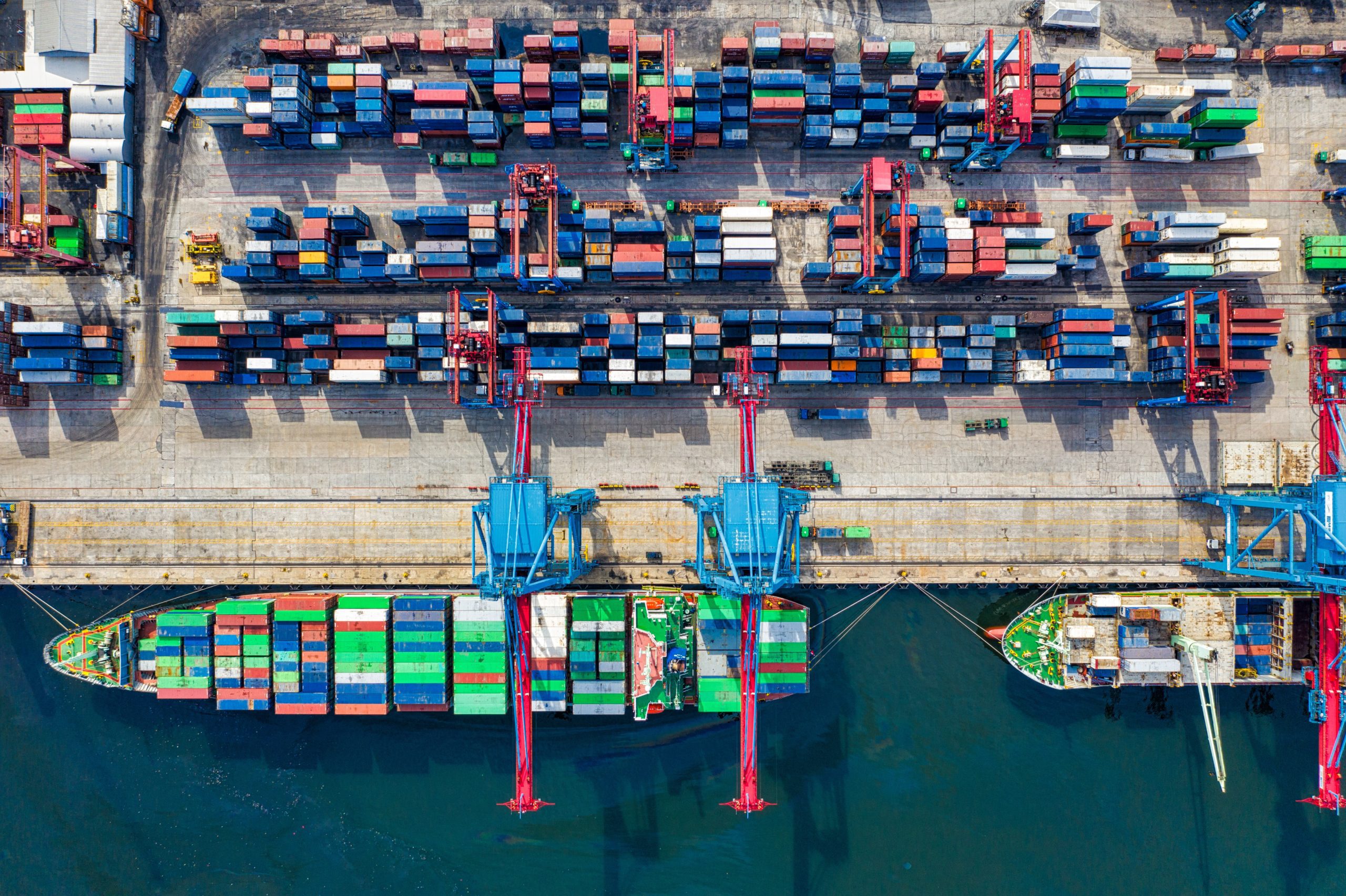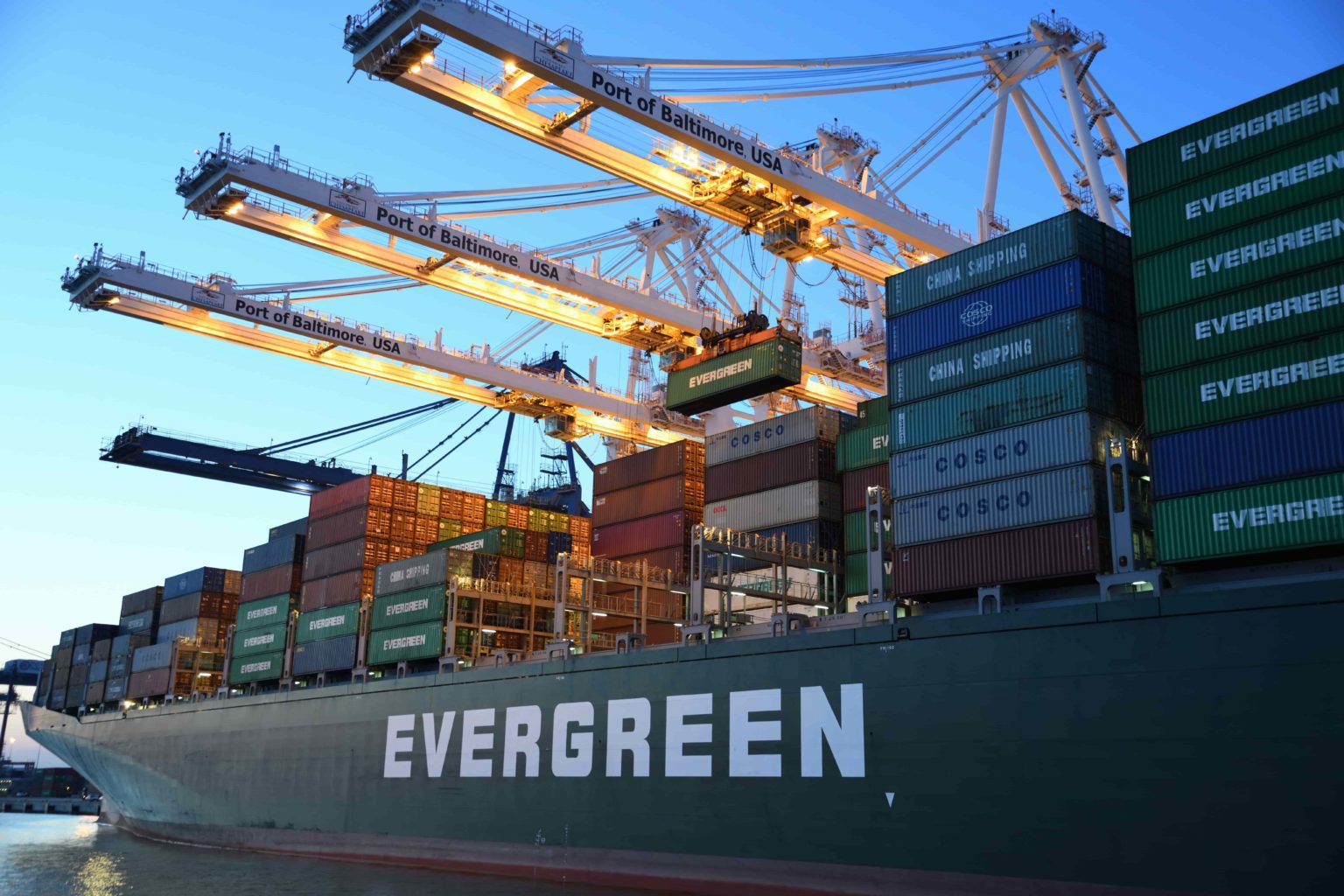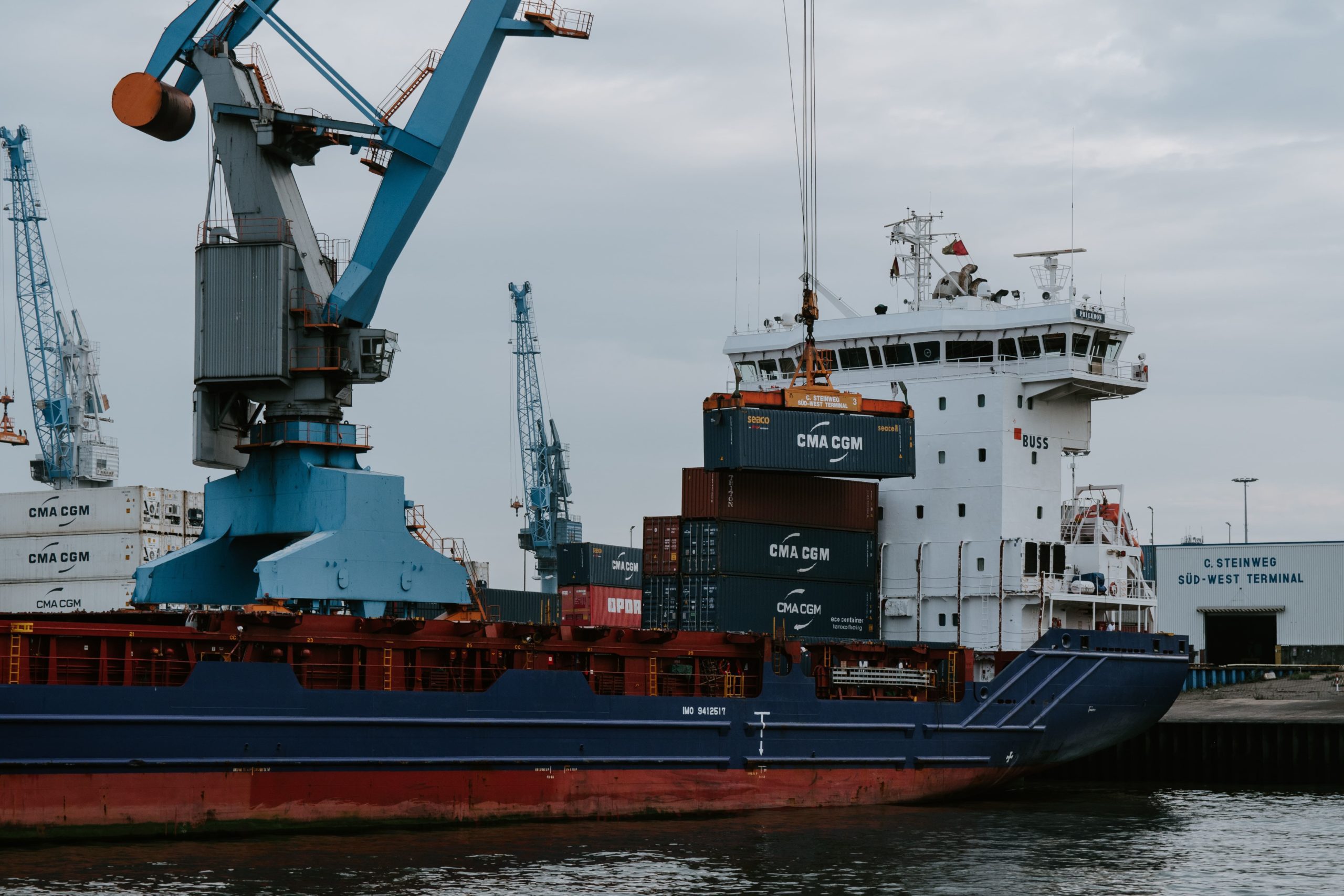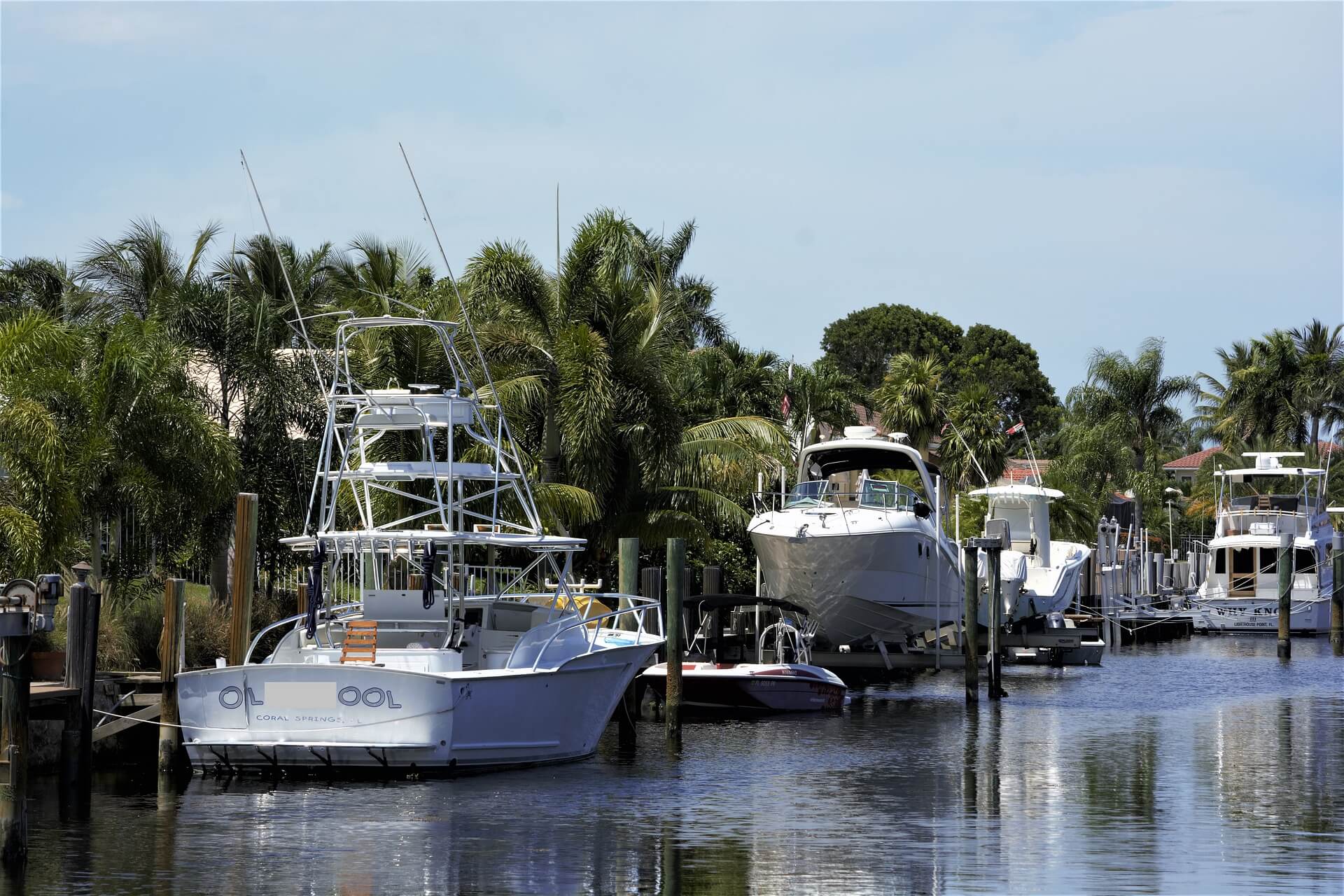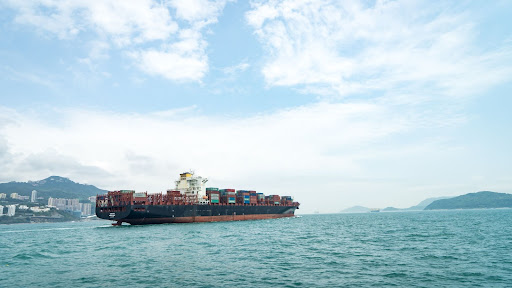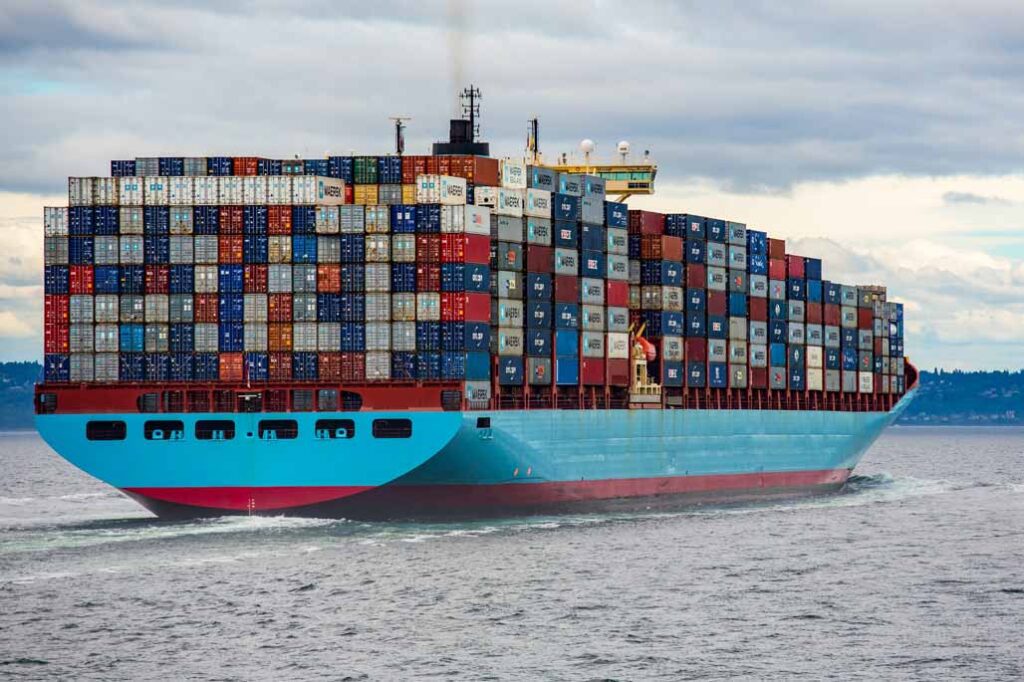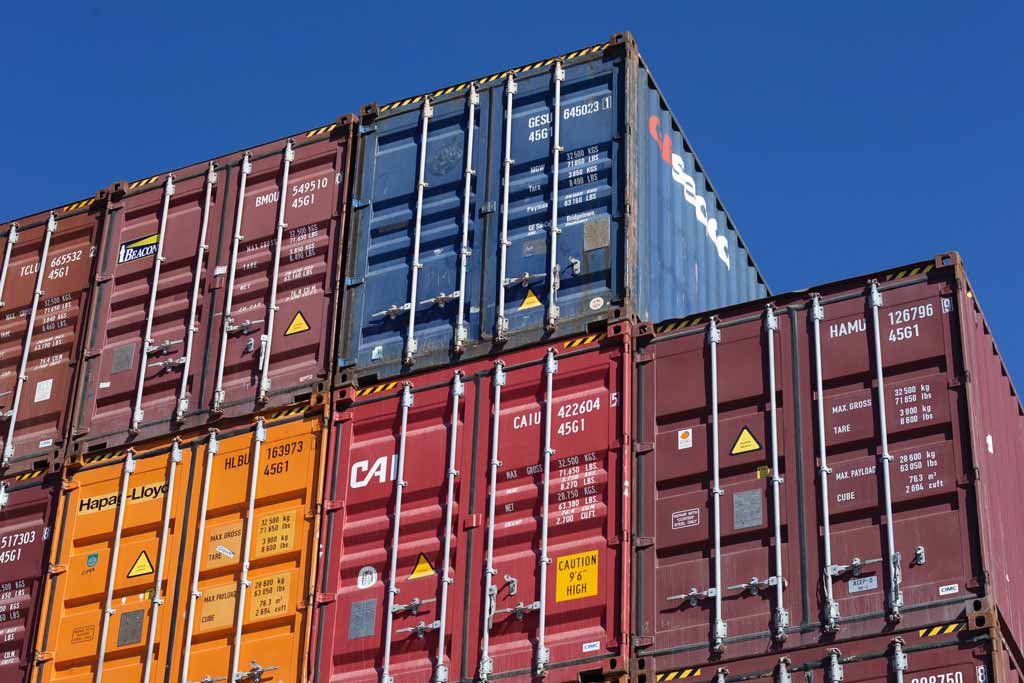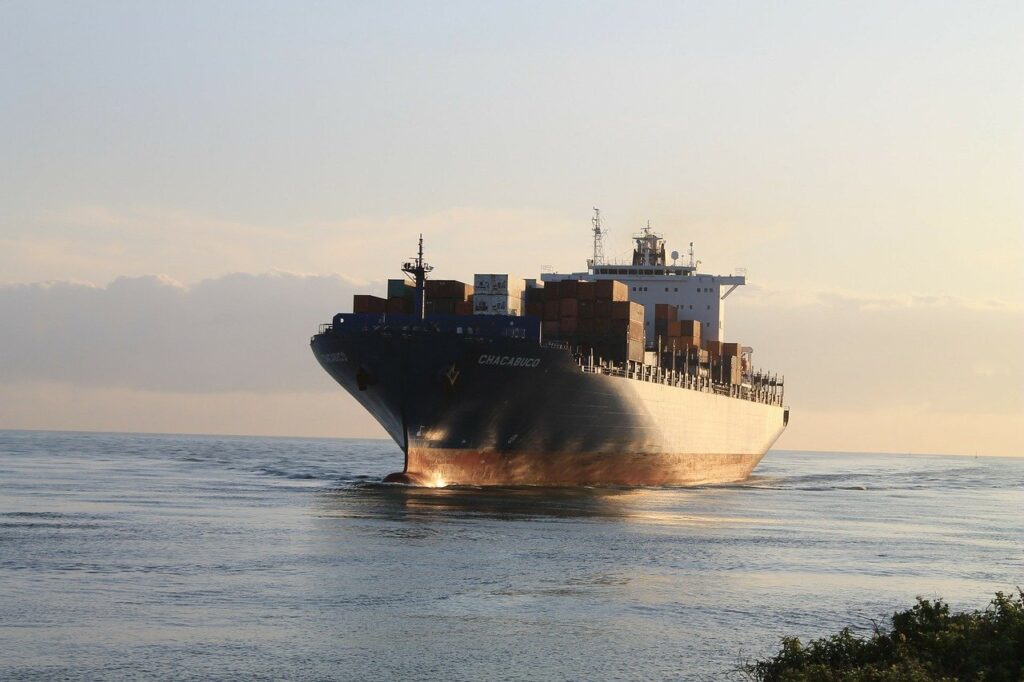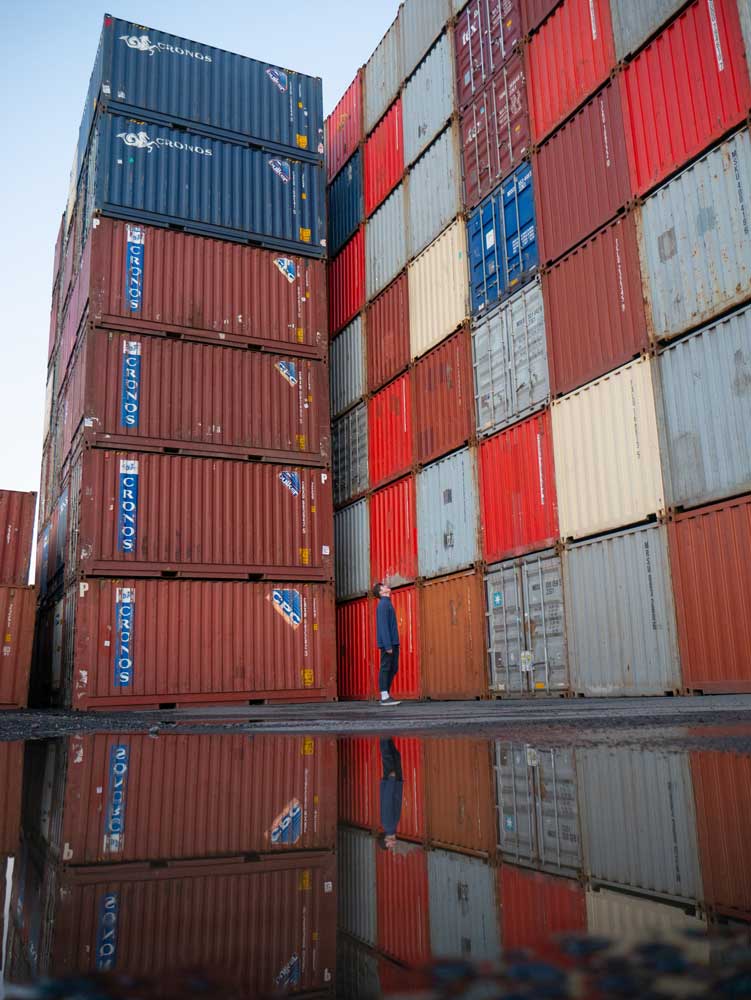2023 Classic Car Auctions
With so many great Classic Car Auctions happening from coast to coast, the beginning of 2023 proved it will be an amazing year for all classic car lovers. Each Auction is an opportunity to become an owner of a beautiful classic and give the unique vehicle a new home.
2023 started off strong with January’s event – Barrett-Jackson Scottsdale Auction – perfect for anyone looking for a car including muscle and classic cars, hot rods and rare European Classics. Some of the cars showcased on the Auction included 1955 Mercedes-Benz, 1966 Shelby Cobra and a 1970 Plymouth Superbird.
February’s Auction to look out for is the Mecum Auctions Kissimmee – a great choice for anyone looking for an American Classic Car. Some of the vehicles that are being auctioned this year are Chevrolet Camaros, Ford Mustang and Dodge Challengers. You also don’t want to miss out on 1970 Plymouth Hemi Cuda and the 1969 Ford Mustang.
If American Classics are not what you’re looking for at this moment or if you’re looking for something with a European touch, then RM Sotheby’s Amelia Island is the event you should attend in March 2023. The auction features many great European Classic cars such as Jaguars, Ferraris, and Porsche. If you’re looking to buy a 1957 Ferrari 250 GT TdF or a 1973 Porsche 911 Carrera RS this event can make this dream come true.
The process of bidding and the thought of becoming a Classic Car owner are exciting, however it’s important to remember that the vehicle, once brought, must be somehow transported from the auction to its new destination. The logistics of shipping a classic car can get difficult, especially if you’re an international buyer, but it doesn’t have to stop you from fulfilling your dream! Trans Global Auto Logistics specialises in safe and secure international shipping services. Our team will make sure the method of shipping suits your unique vehicle and we will ensure your newest purchase arrives in a perfect condition. With over 30+ years of experience in the Logistics Industry Trans Global Auto Logistics provides the best door-to-door services, we have the knowledge and expertise to handle the customs clearance and help you with documentation and paperwork required for international vehicle shipping.
With all the Classic Car Auctions taking place in 2023 it’s important to plan the logistics aspect of buying a classic car. Reach out to us today and let us take care of the shipping process. We will make sure your newest purchase arrives at its new home in a timely manner and in a perfect condition.
In addition to the human and societal costs of war, engaging in warfare also has high economic costs. How wars affect the economy is multi-pronged, but costs commonly include the following: infrastructure damage (roads, bridges, ports), a reduction in the population that can work, shortages of food, raw materials, and finished goods indented for the domestic population or export, an increase in a country’s debt burden and the resulting inflation, and the general anxiety that comes with any disruption to economic activity.
Some politicians and members of the business community offer opinions on how war affects the economy in a positive way when the fighting occurs in other people’s countries. They cite how warfare can create production demand, technological innovation, and business profits. However, it’s important to remember two things when presented with such arguments. First, war has a significant cost for all countries involved. Money that must be spent on military expenses and rebuilding destroyed infrastructure could have been spent on improving living conditions and boosting economic innovation. Second, is that modern-day warfare is no longer limited to the two or three countries involved in the on-the-ground fighting. We live in a global economic community that is deeply intertwined and dependent on one another. One only has to look at how the Russia-Ukraine war has disrupted supply chains and the availability of raw materials. If there are positive outcomes for how the war affects the economy, they are not ones benefiting most independent business owners and the general population.
Wars and Global Trade Wars
Global trade wars happen when one country or a group of countries impose tariffs (taxes) or quotas (limits) on imports from another country or groups of countries. These tariffs and quotas create a domino effect where the countries they are designed to curtail retaliate with their own forms of trade protectionism. As a result, these global trade wars ultimately reduce international trade. In some instances, the trade limits and higher prices foster domestic growth and innovation, but in cases where raw materials are not widely available (crude oil, uranium, diamonds) or a country that cannot bootstrap “homegrown” solutions, global trade wars can create disastrous trickle-down effects including inflation and a general depression of economic growth. While global trade wars do happen without the influence of war, they are another example of how wars affect the economy. All too often, outside countries impose trade sanctions and boycotts as part of their efforts to quell the fighting and limit the power of the aggressor. These mechanisms are the most extreme forms of tariffs and quotas and, when used against countries like Russia, can create economic instability worldwide.
How Wars Affect the Economy: Shipping Services
Shipping services are critical in keeping the global economy moving. Unfortunately, the Russia-Ukraine war has severely impacted all shipping, including international cargo shipping via ocean transport, air freight and travel, and land transportation by rail and vehicles. Shipping routes have been destroyed or cut, and many transportation firms are curtailing services or experiencing significant delays. As a result, shipping rates have skyrocketed. In addition, some freight and transportation insurers have exponentially increased premiums due to the dangerous conditions at many shipping ports and transportation hubs in areas experiencing bombing and active fighting.
If those conditions weren’t bad enough, citizens of Russia and Ukraine comprise nearly 15% of the seafarers in the global shipping workforce. As a result, shipping companies around the globe are now dealing with a significant employee shortfall in hiring and retaining crew members due to the war.
How Wars Affect the Economy: Oil Prices
Regardless of where a person lives, everyone has been impacted by rising oil prices. While the current Russian-Ukraine has disrupted the oil supply chain from Russia and created a global trade war, this is not the first time the United States has experienced sticker shock at the gas station. The Gulf War of 1990, which involved Iraq attempting to annex Kuwait, increased oil prices. Prices more than doubled in three months, from $21 to $46 per barrel. When a country is a major oil or natural gas producer, sanctions and supply chain disruptions put pressure on gas prices, regardless of where one lives. For countries that are major oil/gas producers, this is another example of how wars affect the global economy.
Psychological Costs
While it’s possible to estimate how war affects the economy and its associated costs, it is much harder to determine the psychological impacts and how the pain, suffering, and fear can traumatize soldiers and civilians. This personal and collective trauma ultimately affects how a country is or is not able to recover and rebuild when the conflict ends. Some countries, such as Germany, Vietnam, and Rwanda, exhibited remarkable resiliency following prolonged and horrific wars and were able to rebuild. However, there are still many places throughout the world where wars have only brought more violent conflicts and increasing levels of destabilization and economic insecurity for people residing in those areas.
Determining the current state of shipping industry news is similar to looking into a Magic 8 Ball – when you shake it and the water settles, the message says, “Future Remains Uncertain.” This uncertainty is due to many factors: ongoing trade tensions between China and the United States, domestic and international politics, fuel pricing uncertainties, and environmental regulatory concerns. If those weren’t enough to roil the waters, the lingering impact of the COVID-19 pandemic continues to cast a shadow on the overview of the shipping industry’s economic future. The ongoing presence of COVID-19 continues to negatively impact charter rates, operating expenses, staffing, and logistics planning.
Shipping Industry News: The Good
Let’s start this update on the most positive note. The good news is that the shipping industry is doing better than expected. In 2020, the United Nations Conference on Trade and Development reported that worldwide maritime trade was expected to drop by over 4 percent due to the pandemic. Thankfully, those losses didn’t materialize due to the accelerated distribution of the COVID-19 vaccine starting in 2021. While there is little positive news that anyone can say about the impact caused by the global pandemic, one benefit is that the shutdown provided an overview of the shipping industry’s weakest areas, such as the need to improve risk management and emergency response preparedness in capacity logistics. The industry has been improving its position as a result.
Shipping Industry News: The Bad
One of the more pervasive and troubling trends in shipping industry news is employment and staffing. There are both immediate and longer-term concerns that the industry will need to take into account to avoid future problems. At present, shipping companies around the globe are now dealing with a significant employee shortfall in hiring and retaining crew members due to the Russia-Ukraine war. Citizens of these two countries comprise nearly 15% of the seafarers in the global shipping workforce. In addition, the closures and destruction of essential ports in these areas of the world and many young people being called into military service have created crew shortages that are not quickly replaced.
According to the United States Department of Labor, employment in seafaring occupations is expected to decrease by roughly 2 percent until 2028. It is anticipated that many currently working in water transportation will leave the sector for land-based transportation jobs in the coming years. While hiring will be necessary to replace transitioning workers, technological changes may result in newer, automated ships designed to be operated by smaller crews. Increased efficiency in computerized systems for navigation, engine control, crew management, and cargo gradually reduces the demand for on-site, in-person crews. In addition, jet propulsion cargo vessels, commonly referred to as fast ships, are making gains in certain water transportation sectors. As ocean-crossing times decrease, the nature and expectations of the industry will change. New opportunities will present themselves, and redundancies or obsolete practices will need to be retired.
Shipping Industry News: The Ugly
One of the world’s oldest professions refuses to go away; and by that, we mean piracy. Based on data from Statista, a shipping industry overview of piracy claims saw a 24 percent year-over-year increase in attacks (both successfully executed and attempted). The areas most susceptible to piracy are off of the Gulf of Guinea and Gulf of Mexico. The rise in piracy is attributed to the pandemic, which has left many governments throughout Africa, South and Central America, and South Asia with insufficient funds to battle these illegal and dangerous attacks. Pirate activity is projected to continue and worsen in the years ahead in these areas of the world.
Shipping Industry Overview: The State of 2022
In 2022, the shipping industry is currently experiencing one of the most turbulent markets on record. While demand has been strong, it seems likely that a slowdown will occur later this year. As the global economy weakens, inflation rises, and supply-chain disruptions continue, growth will slow compared to the increases in container volume we experienced in 2021. As a result of this anticipated slowdown, many major carriers are already increasing their number of canceled sailings throughout the three major trade lanes: US West Coast-Asia, US East Coast-Asia, Northern Europe-Asia. Of these three routes, the US East Coast route is the most robust, with only 10 percent of its capacity reduced. The US West Coast Route is not so fortunate, and a reduction of nearly 25 percent is expected. However, as those of us who have been in the business a long time know, cycles go back and forth, and it’s only a matter of time before freight surges follow, and demand and capacity rise again.
Shipping Industry News: A Little Bit of Entertainment
Today’s article about shipping industry news can’t be ALL business! So to lighten things up, here’s a curious bit of “entertainment” news you might have missed. The world’s largest cargo freight ship recently arrived in the United Kingdom. The vessel, called the Ever Ace, is a 1,300ft ship capable of holding 23,992 standard containers. We believe it’s a current world record! Ever Ace arrived at Britain’s largest container port, Felixstowe in Suffolk, and is operated by Taiwan’s Evergreen Marine Corporation.
Let’s hope Evergreen and Ever Ace has better luck than its sister vessel, Ever Given. As you may recall, that’s the vessel responsible for blocking the Suez Canal in March 2021. That incident went down in shipping history as one of the biggest traffic jams on record!
Staying on Top of Shipping Industry News is Our Business
At Trans Global Auto Logistics, we help businesses navigate complex shipping challenges. With offices in Dallas and Orlando, Florida, and shipping warehouse facilities in Los Angeles, New Jersey, and South Carolina, Trans Global Auto Logistics is a licensed and bonded freight forwarder and Non-Vessel Owning Common Carrier (NVOCC). Our three decades of logistics experience and risk mitigation best practices protect your cargo and bottom line. Contact us today to learn more about our services and request a price quote.
If you’re in the boat-building business, you realize that every cent matters in your plight for profits. Unfortunately, tariffs can easily eat into your profits. And with costs of materials rising in today’s inflationary environment at the start of 2022, it’s not surprising that some boat builders fear that their businesses will end up sinking versus swimming in the long run.
The good news? 2021 ended on a positive note for American boat makers when the European Union’s (EU’s) retaliatory tariffs came to an end. The EU and the United States (US) agreed to eliminate the 25% retaliatory tariffs that the EU placed on all American-fabricated engines and boats entering the 27-member-state union.
Let’s take a deeper look at what the EU’s removal of these tariffs on American-created boats means for boat makers in the US and boat buyers in the EU moving forward.
The End of Retaliatory Tariffs
The EU’s decision to end retaliatory tariffs was announced back in November 2021, and the move couldn’t have been more timely. Why? Because the union’s tariffs were slated to rise from 25% to 50% on December 1.
These boating-related tariffs were an important component of a bigger agreement that U.S. President Biden and EU Commission President Ursula von der Leyden announced during Rome’s G20 Summit. The larger agreement removed American tariffs on any imported aluminum and steel from the union. These tariffs dated back to 2018, during former U.S. President Trump’s administration.
The National Marine Manufacturers Association, a key advocate for recreational boaters and boat makers, played an instrumental role in bringing visibility to the tariff issue and subsequently resolving it.
Why the End of Retaliatory Tariffs Matters to the Boating Industry
Ending the retaliatory tariffs is great news for recreational boat makers, as American boat makers comprise the biggest segment of today’s outdoor entertainment/recreation industry. This industry is valued at several hundred billion dollars annually. This industry supports hundreds of thousands of jobs and tens of thousands of businesses.
Sadly, during the past three years, the tariffs sparked a trade dispute that ultimately hurt this industry. Specifically, it led to a 50% drop in products going to one of the industry’s largest global markets. It also caused the industry to lose revenue totaling several hundred million dollars. In light of this, the recent decision is a major win for the boating industry as a whole, allowing it to thrive like never before long term.
Long-Term Implications for Buyers and Sellers Specifically
Now that the retaliatory tariffs are gone, American boat fabricators no longer have to worry about being saddled with taxes that put them at a disadvantage in the international market. Instead, as a boat maker, you can continue to export in the most cost-effective manner possible.
In addition, moving forward, you won’t feel pressure to increase your prices to absorb the tariffs. As a result, you can remain more competitive, which will increase your chances of making sales. And your buyers will save in the process. It’s a win-win situation for sellers and buyers.
Save Money with High-Quality Boat Shipping Services, Too
In addition to saving on tariffs in 2022, you can begin saving on your boat shipping costs simply by hiring a top-tier logistics service. Perhaps you’re shipping boats to the United Kingdom, North Europe, West Africa, or even the Middle East from the US. Or, maybe you’re a buyer in the EU looking to purchase a U.S. boat more affordably now that the retaliatory tariffs are a thing of the past. Either way, a reputable service provider can make the process as cost efficient and streamlined as possible for you.
As a general rule of thumb, you’ll need to begin any global boat shipping process about a month ahead of your shipping date. In this way, you’ll have plenty of time for preparing your vessel and gathering all of the necessary legal documents. This is critical given that shipping a boat internationally is inherently a complicated process both legally and logistically.
Note that if you’re in the United Kingdom, for example, the process of shipping a boat from the US’s East Coast may last from 30 to 45 days. Meanwhile, this stretch of time may be a longer 45 to 60 days if you’re getting a boat shipped to you from the US’s West Coast.
Be sure to take advantage of marine insurance as you embark on the boat shipping process. This will provide you with full coverage in the event that your vessel is damaged while in transit.
Take Advantage of Highly Rated Vehicle Transport Services at Trans Global Auto Logistics Today
At Trans Global Auto Logistics, we take pride in offering top-of-the-line vehicle transport services for clients all over the world.
We realize that global shipping remains a constantly changing industry. For this reason, we are committed to consistently evolving, too. We combine our knowledge with the most cutting-edge shipping advances to bring you the unparalleled service you deserve.
As a shipping industry leader, we ship 15,000 privately owned vehicles from America each year. In addition, we are licensed to take care of all export and import documentation for our customers.
Get in touch with us today to find out more about our matchless logistics services. With our help, your boat shipping process can truly be smooth sailing from start to finish.
No one wants to be caught unawares with the holidays approaching, and that means it’s time to consider international shipping costs. This season, be prepared with the facts on international shipping delays so that you know what to expect.
Why Are There International Shipping Delays in 2021?
Back in 2020, many people assumed the effects of the COVID-19 pandemic would essentially be over by the time the calendar turned to 2021. Of course, that didn’t happen, and this year’s delays are likely going to extend into if not beyond 2022. Goldman economist Ronnie Walker explains, “Backlogs and elevated shipping costs are likely to persist at least through the middle of next year because no immediate solution for the underlying supply-demand imbalance at US ports is available.”
Governments, retailers, and individuals have done as much as they can to prepare for the holiday surge but only so much can be done either preventatively or proactively when the entire world is having the same problem. It’s an oversimplification to say that all delays are because of COVID-19, but the generalization isn’t too far from the truth. Since port congestion and other symptoms have no way to get better, the entire situation is really just getting worse. People want more things shipped than ever, but that doesn’t get it to them even faster; in fact, with the backlogs, it means more delays.
Different International Shipping Methods
To understand what to expect with delays in shipping this season, it’s first critical to recognize the different methods that are available for global shipping. While most international shipping happens over water through cargo transport, there are also options through the air. Learn more about different international shipping methods below. And remember, even the most secure or fastest methods can’t be completely immune from international shipping delays.
Roll On Roll Off
Usually abbreviated as RoRo, roll on roll off is the most popular method for international boat shipping and other large shipping services. While consumers may not care how their items are shipped, the method selected can have a significant impact on how soon their products get to them.
Expected Delay: Days to weeks; time varies. Ports are currently overwhelmed and there are worker shortages causing gridlock at each stage in the global supply chain due to consequences of the pandemic.
Container Shipping: Shared or Dedicated
As the name indicates, this type of shipping stores goods in a container, either shared or dedicated. Similar to open vs. closed transport over land on the road, the more private or exclusive a shipping situation is, the more expensive it is.
Expected Delay: Days to weeks; time varies. Many cargo containers are gridlocked at ports and experiencing international shipping delays.
Air Freight
Air freight is the quickest but most expensive shipping method, occurring in hours rather than the days or weeks it takes for cargo by sea shipping. With all the port problems going on right now for ocean cargo shipping, air freight may seem especially tempting. However, in reality, airports have many of the same concerns as sea ports.
Expected Delay: Hours to days; time varies. Airport restrictions make it difficult for air freight items to take off and land. Processing also takes longer than it did prior to the pandemic.
Understanding International Shipping Costs This Year
Obviously, in general, costs will be higher due to international shipping delays 2021 has brought, with effects that vary, but in general both lower supply and increased demand. Air freight is still more expensive than standard ocean cargo shipping, but now the ratio is even higher for how much more it costs. It’s not just that shipping costs and times are increased; products themselves will also likely continue to cost more. Inflation is continuing to affect prices at each stage of the supply chain.
People typically look for the cheapest shipping options, but taking the lower cost often means sacrificing security, quality, and speed in the shipping conditions. It is difficult to even generalize expected delivery times for different shipping methods because the reality is so dependent on so many factors, which include:
- The port of departure
- The port of arrival
- The distance between the port of arrival and the ultimate destination
- How current travel and shipping restrictions are affecting and implemented in the various relevant locations
- What type of shipping method is used
- What companies are involved
And that’s just to name a few. For example, a shipment of high-end furniture from India to the United States in a shared container will definitely take a lot longer than an order of throw pillows being flown from Canada to the East Coast, but it may cost a lot less.
What Does This Mean for You?
So there’s delays, and it’s hard to know how it will affect costs, but how does that affect your shopping? Well, for starters, experts recommend getting shopping done as soon as possible. It won’t matter if companies have a three-week backlog if you get your Christmas shopping done before Black Friday. It’s also important to consider that some things may not be available in your price range in 2021 that would have been workable in 2019. But for something that’s really important, don’t be afraid to put down the funds necessary for a quality, secure shipping experience.
Get Qualified Shipping Support
Trans Global Auto Logistics is proud to serve as a bonded Non-Vessel Operating Common Carrier (NVOCC) and Freight Forwarder with more than 30 years of experience. While it’s true that we have never seen anything like the international shipping delays 2021 has brought with continuing effects of the pandemic, we are still the experts to come to when it comes to qualified shipping support. Reach out now for a quote on our services or more details.
Allow us to introduce you to the Infiniti 52 racing yacht. The racing yacht isn’t just easy on the eyes—it’s also the first to be equipped with Doyle Sails’ Cableless technology. The innovation is so advanced that engineers claim it eliminates the need for a professional crew- meaning amateurs are capable of taking to the seas in the Infiniti 52.
Trans Global recently helped deliver the first ever Infiniti 52 from the United States to the United Kingdom where it will finish assembly and begin test runs. The yacht is scheduled to be completed in December. A racing team from Finland will then compete in the 2022 Royal Ocean Racing Club Transatlantic Race.
So, what makes the Infiniti 52 so innovative? The yacht is built around the award-winning Dynamic Stability System. In layman’s terms, the Infiniti 52 only needs a crew of 7 or 8—a vast decrease from the 15-man crew typically required in Grand Prix yachting.
The Infiniti 52 is also the first Grand Prix yacht to be engineered with the revolutionary Doyle Sails Cableless technology. The technology is much like it sounds—it eliminates the use of torsion cables. Most Grand Prix racing crew members train extensively year-round due to the grueling physical nature of the sport. The top teams spend upwards of 30 hours per week in the gym. The cableless technology makes sails easier to operate and reduces loads by up to 30%.
[rev_slider alias=”shipping-to-hawaii-1″ slidertitle=”Shipping to Hawaii 1″][/rev_slider]
To say the Infiniti 52 is ahead of its time would be an understatement. When the crew takes off in January- the yacht will be the first equipped with the technology, innovation, and with around half of the crew members.
If the race were today, who would you choose, The tried-and-true yachts who have taken Grand Prix races in the past or the new kid on the block with a cutting-edge approach to the sport?
Global shipping is in chaos. After somewhat recovering from a COVID-19 recession, the industry is now battling a confluence of disruptive factors that have led to an international transportation crisis. From manufacturing plant shutdowns in North America to goods piling up on Chinese factory floors, an extremely tight logistics capacity is disrupting international trade on a scale not seen in modern history.
The international shipping capacity crunch has sent global supply chains into disarray, posing a challenge to post-COVID economic recovery. Tight capacity is causing manufacturing disruptions, transportation delays, and higher shipping costs, adversely impacting the supply chains and profit margins of many businesses. Let’s review tight capacity, what it is, and how our team at Trans Global Auto Logistics (TGAL) can be your partner in navigating the issues involved.
What is Tight Logistics Capacity?
Before delving into tight capacity, let’s first try to understand what capacity means in the logistics industry. Capacity in the logistics industry is the maximum amount of cargo that can be carried by transport modes like trucks, trains, and ships. In simpler terms, capacity is the amount of shipping space available for transporting goods to their destination.
When there is more capacity supply than demand, we experience overcapacity. But when there is more demand for capacity than available supply, we experience tight capacity. Many factors, some of which stem from the pandemic, have led to the current tight logistics capaaity around the world. Below, TGAL will explain how insufficient shipping container capacity, congested ports, and labor shortages are causing the global transportation crisis we’re facing today.
Why is There Tight Capacity?
Some factors that contributed to the current disruption in transportation, like labor shortages, existed before COVID-19. But a cascade of events that followed the global pandemic have created an international logistics crisis, squeezing all parties involved in the global supply chain. Some factors that have caused the current tight logistics capacity include:
Increase in Demand
As countries locked down and imposed stay-at-home orders, online shopping became most people’s favorite pastime. Lower fuel costs, a spike in eCommerce shopping, and an increased need for more personal protective and medical equipment led to more demand for shipping container capacity to transport goods around the world. Increased demand for logistics capacity led to decreased supply of available freight space, leading to the global transportation crisis we are experiencing today.
Port Congestion
COVID safety precautions have decreased the availability of dockworkers in many of the busiest ports around the world. A smaller workforce at The Port of Los Angeles ⎼ the busiest port in the United States and the main point of entry for goods from Asia ⎼ has led to slower operations and delays in handling cargo.
Ships are stuck for days offshore in floating traffic jams and empty containers are piling up at the port. There are currently more than 285,000 empty shipping containers lying idle at the Los Angeles port. Slower loading/unloading and countless empty containers sitting idle at busy ports around the world are major contributing factors to the global logistics capacity crunch.
Chinese Trade Surplus
China was the first country to get hit and then recover from the Coronavirus. As a result, its economy bounced back quicker than other countries. This uneven economic recovery led to significantly more Chinese exports heading to the US and Europe than the other way round. China is aggressively demanding empty containers to be sent back from export destinations, resulting in tighter shipping container capacity for American and European exporters.
Labor Shortages
Many countries were struggling with truck driver shortages long before the pandemic. But the pandemic quarantined some drivers and caused many others to lose their jobs, resulting in a severe shortage of truckers in many countries around the world.
Trucks are needed to haul shipping containers from ports to the rest of the country. A lack of truck drivers is tightening logistics capacity and delaying the delivery of goods to their final destination, disrupting entire supply chains across many industries.
Impact of Tight Capacity on Businesses and Consumers
Capacity constraints in the logistics industry are creating bottlenecks in international transportation, particularly with the recent issues at the Suez Canal. From manufacturers to businesses and consumers, every entity in the supply chain is feeling the pain of a global capacity crunch. Delayed or canceled deliveries of raw materials are leading to factory shutdowns in many countries around the world. Honda halted all its American and Canadian manufacturing operations as port logjams hampered parts procurement.
Along with transportation delays, constraints in logistics capacity are leading to skyrocketing shipping costs. Businesses wait for weeks and are willing to pay premium rates to get sufficient shipping container capacity for transporting their cargo. The shipping crisis has caused a three-to-six-fold increase in international transportation costs, hurting businesses’ profit margins and consumers’ pockets. McKinsey estimates international shipping costs to remain high for the next two years, threatening the viability of small businesses that rely on importing and exporting goods.
How to Deal With Tight Logistics Capacity
The international transportation crisis has forced governments and businesses to come up with new solutions for mitigating tight capacity. Congress has recently introduced a bill ⎼ the DRIVE Safe Act ⎼ that can help relieve the country’s truck driver shortage. Carriers are implementing several measures ⎼ such as adopting more efficient unloading systems and reducing container detention periods ⎼ to help ease the shipping capacity crunch.
Despite all these measures, the logistics capacity crunch will not go away anytime soon. A fast-recovering global economy along with fewer shipping containers in inventories mean the transportation crisis is here to stay for the foreseeable future. Businesses need to form long-term partnerships with shipping providers to get priority access to limited capacity when they need it.
Getting Affordable Rates During Tight Capacity
If you run an import and export business or just need to ship your personal goods to another destination, the shipping container capacity crunch will make it difficult to transport cargo cost-effectively. Many logistics companies will charge you hefty fees for shipping your freight, which can put a big dent in your wallet or damage business finances. To combat the high costs of tight capacity, you need a logistics partner with extensive experience and expertise in the industry to get the most competitive rates for your freight.
Partner With Trans Global to Get Competitive Rates
With more than 30 years of experience operating in the freight and transportation industry, Trans Global Auto Logistics (TGAL) has the knowledge and expertise needed to overcome the challenges of tight logistics capacity. We have built solid relationships with numerous shipping lines and charterers over the past few decades, allowing us to get the most competitive rates in the market during times of shipping container capacity shortages.
Unlike other freight and logistics businesses, we own our warehouses, which helps us offer lower-cost shipping services to our customers. If you’re struggling to get affordable rates for shipping your cargo because of tight logistics capacity, we can help. Call us at 972-559-3229 to learn more about our transportation services or request a quote for shipping your cargo.
The world continues to feel the impact of Brexit. Shipping to Europe and the UK has changed, both in the short term and the long term.
But what do the Brexit shipping impacts mean for you, the consumer? Do the Brexit and shipping industry complications have much visibility for shipping customers? How is shipping different going forward in a post-Brexit world?
Today in the Trans Global Auto Logistics Blog, we are looking at Brexit, shipping to Europe and the UK, impacts on the shipping industry, and how all of this affects you.
The Big Picture Summary
The bottom line for shipping customers is that Brexit will have an overall negative impact on international shipping for the foreseeable future, particularly shipping to and from the UK. Some of the key trends to expect are:
- Higher shipping costs
- Longer shipping times
- Unexpected delays (mainly in the near future)
- Greater regulatory burdens
- More logistical complexity in the process
- Reduced availability and breadth of shipping services (mainly in the near future)
When it comes to Brexit and shipping industry companies, the market will gradually resolve most of these problems. But it will take years, and some of the problems are probably here to stay.
Meanwhile, there are some localized winners. If you’re a non-UK goods company who directly competes with UK companies on the international market, you may gain an edge — especially in the short term. With Brexit, shipping to Europe and elsewhere is easier right now if you’re not in the UK.
Immediate Post-Brexit Shipping Impacts on the UK

Highlights: Disruption, Disruption, Disruption
- Shipments into the UK — not just from the EU but globally — were disrupted due to Brexit-related tax collection issues, as many shipping companies were not set up to handle the new and uncertain tax obligations.
- Shipments into the UK were also disrupted due to pandemic-driven fluctuations in consumer demand, container shortages, and port congestion. Brexit made things considerably worse by creating a spike in demand at the end of 2020.
- These problems triggered a reduction in service to the UK by mainline cargo carriers, making things for the UK even worse still.
- Post-Brexit shipping to Europe and Northern Ireland from the UK (Northern Ireland continues to abide by EU single market regulations) met with new uncertainties, delays, and the aforementioned reduction of mainline carrier services to and from the UK.
Shipping Rates Soar
One of the first and biggest Brexit shipping impacts was that shipping rates exploded. Most notably, rates from Asia into the UK spiked fourfold, reaching record highs.
This was due to a massive spike in consumer demand, especially in the UK — where citizens were eager to take advantage of the European single market while they still could, and had excess funds to spend on consumer purchases due to reduced availability of hospitality services during the pandemic. This caused a flurry of Brexit shipping to Europe and the UK from Asia.
This surge in imports from Asia led to UK port congestion, exacerbated by staffing shortages due to COVID. and a glut of empty containers stranded in the US, UK and Europe due not only to the Brexit situation but the pandemic as well. With so many containers in the West, there were not enough containers available in Asia to meet the surge in UK demand, leading to the spike in rates.
The Good News
The good news is that the worst Brexit shipping impacts — the shipping disruptions — are going to subside, or have already been subsiding. Brexit and shipping industry companies aren’t “enemies” of each other: The demand for shipping services will be strong over the long term, which means that the shipping disruptions will ease up as the initial shock of the UK’s departure from the single market fades. So the UK’s post-Brexit shipping to Europe will eventually stabilize.
In the meantime, the UK is eager to make new trade agreements with other key trading partners like the U.S., which, once in effect, will likely have a positive impact for companies shipping to or from the UK.
A Less Favorable Customs Landscape
As mentioned, the shipping market will gradually optimize for the new, post-Brexit economic landscape. However, one thing that can’t be optimized away is the new regulatory barrier when it comes to Brexit shipping to Europe (and Northern Ireland) from the UK, and to the UK from Europe.
We expect the rise of border control and customs barriers between the UK and the EU to be one of the main long-term Brexit shipping impacts. Some of these barriers will be monetary in nature, in the form of various direct fees, and associated cost-of-compliance fees for shipping companies. Other barriers may see quotas or bans on what can be shipped between the UK and the EU.
And then of course there are the barriers of time: Brexit shipping to Europe – UK routes will definitely become and remain slower due to increased inspection times. This has already come to pass in the form of long commercial queues at border stations. Over time these bottlenecks will be solved, but the longer inspection times are probably here to stay, and will become one of the other main Brexit shipping impacts in the long term.
On a positive note, we expect, for the most part, that both the UK and the EU will try to minimize these barriers, since it is greatly in their mutual economic interest to do so. And we have seen the UK largely choose to continue to abide by, for example, existing EU environmental and safety regulations pertaining to international shipments.
Just-in-Time Inventory Management
The slower reality of post-Brexit shipping to Europe, and vice versa, is having a global impact on companies that use a “just-in-time” inventory management system. Under this system, supply chain disruptions can lead to sudden and serious shortages. Until the uncertainties are resolved and equilibrium is achieved in UK – EU shipping, just-in-time may become less desirable for some companies.
Brexit and Shipping Industry Companies
Shipping companies themselves have experienced considerable post-Brexit shipping impacts and uncertainty.
- UK shipping companies are experiencing loss of cabotage at European ports — i.e., the ability to run shipments between two non-UK terminals — making it much more expensive for them to do those kinds of routes.
- Shipping companies around the world are having to bolster their regulatory compliance to meet the merging requirements for post-Brexit shipping to Europe and the UK.
- As mentioned, there is a continued risk of the UK losing its privileged access to direct service from the mainline shipping companies. To the extent this happens, Britain will become more reliant on auxiliary / feeder carriers, which is more expensive and adds a step in the shipping process.
The shipping industry as a whole will not be particularly hurt by Brexit, and shipping industry companies are already settling into a new equilibrium. The good news for you as a shipping customer is that, as the initial post-Brexit shock fades, you can expect the reliability, availability, and breadth of shipping services to all improve, and the spike in shipping rates to come down (albeit probably not to what it was before Brexit).
Shipping to Europe and the UK is definitely still a viable option! Shipping companies have dealt with international borders long before Brexit, and shipping industry best practices are already highly advanced and ready to be applied to the UK – EU situation.
Get the Reliable International Shipping Services You Need at Trans Global Auto Logistics
The biggest takeaway from Brexit is the uncertainty that it brings. It will take decades for everything to play out. But in the meantime, when you need to ship to or from overseas, including the UK or EU, you have good options available.
At Trans Global Auto Logistics, we have responded to the flurry of post-Brexit shipping impacts by closely following developments, building out new capabilities and compliance protocols wherever necessary, and ensuring the absolute minimum of disruption to our shipping services.
We won’t be stopped by Brexit! Shipping to Euriope and the UK with Trans Global means taking the stress and hassle off your hands by letting us get it done right. We have over 30 years of experience, and are proud to offer a wide variety of shipping services and modes of transport.
Speak with Our Knowledgeable, Friendly People
We hope this article has helped you better understand the major Brexit shipping impacts in terms of customers like you who ship internationally. At Trans Global, we are ready to deal with Brexit and shipping industry complications. Trust us with your post-Brexit shipping to Europe and the UK!
- Contact us to discuss your shipment, ask questions, or get more information.
Explore Our Shipping Services
Here are some of our most popular international shipping services:
- International Cargo Shipping
- International Vehicle Imports
- Air Freight Shipping
- Household Goods Shipping Overseas
- Military POV Shipping
Also be sure to check out our resource guide, Container Shipping to the UK.
Ready to get started?
Request a free shipping quote today!
Ocean freight remains the most cost-effective way to move large amounts of property and goods around the world for private individuals, businesses, and governments alike. Professional ocean freight services help ease international shipping, ensure efficient transport, and are a useful resource in controlling logistics costs. As an ocean freight forwarder and non-vessel owning common carrier (NVOCC), Trans Global Logistics is positioned to help our clients move their property worldwide, whether they’re shipping a vehicle to a new duty station or arranging for the transport of their latest production run from an overseas factory. This gives us a broad insight into ocean freight and what it can mean for our customers.
What Ocean Freight Is
In the simplest terms, ocean freight is simply the movement of property via ship over the ocean, just as has been done for centuries. Modern ocean shipping, however, has the capacity to move goods that is unlike anything seen before in history.
With the advent of container shipping in the 1950s, the amount of goods that could be reliably moved by a single ship increased exponentially, meanwhile the cost to transport those goods dropped as only a single crew and ship needed to be outfitted for the journey. Ocean freight has continued to evolve, with the standard of shipping still being large container vessels, but advancements in shipbuilding created larger, faster, and more fuel-efficient vessels.
Container Shipping
Shipping containers are large, rectangular metal boxes, similar to the trailers pulled by semi-trucks or train cars. Ranging from 20 to 40-feet long, cargo is loaded into these boxes for transport. Just as moving boxes do when moving a house, these containers allow for the safe and secure stacking and moving of a wide range of cargo packed within. These also allow ocean freight services to offer their clients flexibility without cutting into their bottom line with specialized shipping cost.
- Full Container Shipping – Used for large loads from a single source, full container shipping allows clients to load a full container up to its maximum weight of around 37,500 lbs. Usually priced per-container, this can be the best way for a company to meet its bottom line when they have enough goods to fill or mostly fill out a container.
- Less-Than Container-Load – For smaller shipping orders, such as single vehicles, smaller production runs, or simply less property than a full container would warrant, LCL shipping combines property from multiple sources into a single container to share costs. Each shipper is responsible for a cost based on pieces, weight, or percentage of container occupied.
The Ocean Freight Process
Shipping goods by sea has also become easier. Far from being only the province of large manufacturers or distributors, ocean freight forwarders and full-service logistics companies have worked to remove the barriers that made it a daunting task for individuals and small businesses. The process of shipping your goods or property can be arranged with confidence that, on the other end of the journey, your property will arrive when and where it’s needed in good condition.
- Take Stock Of Your Shipment. – You’ll need to know what you’re shipping and have a general idea of its dimensions, weight, piece count, and what kind of property (vehicles, furniture, palettes) the load will include.
- Contact Your Ocean Freight Services Provider – Your shipping company will work with you on creating an estimate based on the containers needed, the speed with which you need your property transported, and the dates shipping is needed. They can also help coordinate the movement of your cargo from where it is now to the export dock, and on the other end of the journey, they can help facilitate transport from the port to its final destination.
- Paperwork And Preparation – From customs declarations to permits and licenses, you’ll want to make sure you’ve got the documentation needed to efficiently move your property across borders. In many cases, your ocean freight shipper will be able to offer resources that can help you make sure you have the right paperwork or can offer services to help you navigate the process in your export and import country.
- Loading – For full-container shipping, a container will be delivered to your shipping facility where it will be loaded, sealed, and then hauled to the port for loading onto the ship. For LCL services, your goods are usually transported to a shipping consolidator who loads a container with property from you and other clients into a single container that is then taken to the port. Containers are loaded onto a ship and secured for ocean freight transport.
- Transit – Once the container ship disembarks, it will make its way toward its destination. For full ships going to a single port of entry, this direct trip can take as little as a couple of weeks. Some vessels will stop at several ports, loading and unloading cargo, on their way to the eventual final port of call to unload. This can extend the transit time depending on where in the journey your property is to be offloaded.
- Arrival – Once your cargo arrives at its import location, the container is unloaded. Customs will review your documentation if necessary. Once approved, full container loads will then be transported to the final destination, while LCL containers will go to a receiving warehouse to be unloaded and each client’s cargo routed appropriately.
Using Ocean Freight For Your Goods
Our industry experience makes coordinating your shipping painless. As a licensed and insured NVOCC and freight forwarder, we’ve established working relationships that let us offer you efficient import, export, and transit at locations around the world. It all starts when you fill out our easy quote request form. One of our ocean freight specialists will review your information and offer you the options you need to make an informed decision about moving your property. They’ll work with you to set the proper expectations and meet your needs so your goods get where they need to be when they need to be there. Contact Trans Global Auto Logistics for your ocean freight services today.
A 2,700-mile row across the Pacific Ocean is something most of us could never dream of, yet that is exactly what a four-man crew will set out to accomplish in June of 2021. The Endurance Limits Pacific Row Challenge team will set sail in Monterey, California—where the crew will row all the way to Honolulu, Hawaii. While setting a World Record is the ultimate accomplishment, this mission is for much more than just a name in the record books.

“It’s not possible to keep suffering like this, the human body just can’t take this level of punishment for long. Hadley has reached his Endurance Limits,” Clawson recalls.
It was during that darkest point that Clawson felt compelled to give back and help families facing similar situations. In the weeks that followed, Hadley persevered and was eventually able to come home. The road that followed Hadley’s homecoming was challenging. Because of the severe seizures, Hadley now 14, is unable to walk, talk, or develop like a typical teenager. He still suffers from occasional seizures and requires around-the-clock care.
He now lives at St. Elizabeth’s centre for children with Epilepsy and other profound disabilities. The state-of-the-art facility cares for some of the most vulnerable children.
Clawson, who has already raised hundreds of thousands of dollars for charity, discovered a desperate need for a Hydrotherapy pool at the center. A Hydrotherapy pool helps the children with strength, mobility, and perhaps most importantly—provides them an outlet to have fun and simply be kids. Currently, only four children at the facility can participate in Hydrotherapy—but an onsite pool would become a valuable resource for the entire community.
Clawson and the three other crew members decided that rowing across the Pacific Ocean would be the perfect way to raise money for the cause. While the challenge is extreme, it symbolizes just how dedicated the team is to raise the 150-thousand dollars it will cost to install the pool.
The record-breaking row is certain to test the team’s endurance, but if history has taught us anything– it’s that perseverance and a will to succeed can overcome even the most daunting odds.
Trans Global Auto Logistics UK and US are teaming up with Endurance Limits to manage all the transportation of the team’s boat. The boat is currently being built in Devon, UK and will be shipped to Monterey and back to the UK.
To follow along with the team’s journey or donate to the cause visit www.endurancelimits.net.



